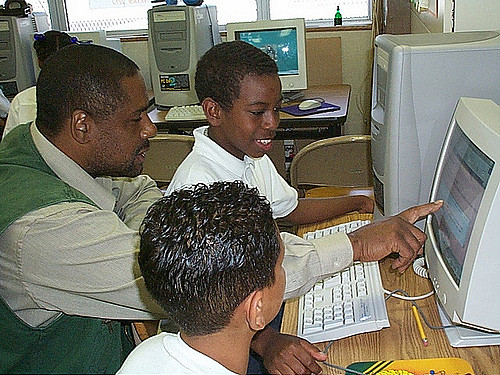Oakland Unified’s initial efforts to stem its budget crisis have failed, and unless we learn some lessons from this experience it will get a lot worse before it gets better. According to the East Bay Times’ recent article “Oakland school district spending ‘limits’ backfire, $10 million in cuts still needed” OUSD’s plan to cut spending,
not only did not yield intended results, but had the opposite effect, resulting in 249 percent more spending for the month of January as compared to the previous year, officials said in a statement. And more purchase requests were made in February and March after the plan was put in place
My guess here is that savvy school leaders pushed additional spending through in the window that was open, anticipating it would close. It’s a hard lesson in the ways that the system reacts to seemingly logical plans, and undermines them. And now, we need to cut more, faster.
There has to be another way than autopilot
When I look at the further clamping down on budgets, with blanket hiring freezes, limits on spending and future encroachments that schools were banking on in some cases, and also cuts to some of our most critical departments, I know there has to be another way.
The initial targets for cuts are in departments that serve critical basic needs and reduce achievement gaps: special education, early childhood, and nutrition services, our most vulnerable students and families are threatened with losing the most.
These blanket freezes also tend to stifle innovation and freeze or recede strategic initiatives as things go on autopilot. Newer programs, or those slated for increases, lose more than established ones. “Freeze” doesn’t necessarily mean you will get no additional money, it may mean that the additional money you were promised in this or next year’s budget is not going to be there. So a blanket freeze keeps this big ship going the same direction, and maybe even turns it backwards some.
OUSD has been moving the needle in some of its newer/improved programs and particularly those focused on children who we owe the most; Black children, foster youth, newcomers, English learners, and underserved students most generally. There is a long way to go, but we have been making progress. And again, the nature of newer programs is that their funding is planned to increase—so when a freeze comes, it hits growing programs doubly hard.
We will never nickel and dime our way out of this one, by doing a little less of the same. And staff make up the vast majority of the ongoing costs, and realistically you can’t really cut numbers or salaries, nor should you. If we do take that route and make teaching even harder, staff will vote with their feet, and plenty of other districts are looking.
Putting all the assets on the table
We need to think bigger and expand the options for ways out of this mess, putting all our assets on the table.
And the one asset OUSD has, that actually is increasing in value, is land. The value of property in Oakland is at historic highs, while enrollment is at historic lows. We are a declining enrollment district, there is no reason to think that will change drastically, and we have roughly twice the number of school sites compared to similarly sized districts.
More than 55,000 seats and only 37,000 district students
And let me quote from one of the district’s own presentations, developed in 2009 when the district had more students than today, “The district now has more classrooms than to meet 1999 peak enrollment of 55,000 students.” The current OUSD is now at roughly 37,000 students. Something has got to give and it seems like it is land.
The District also has undeveloped parcels, often next to schools, maybe we can sell adjacent land for housing with deals for teachers. And some sites presumably will be shuttering. I also wonder whether that new central office building on Second Ave is the best expenditure. Why couldn’t central office take space permanently in underutilized school sites? That site has got to be worth serious cash.
Old solutions won’t work
These are just some ideas. But we need to think outside the box.
I am not sure of the answer, but I am sure that blanket freezes, and the historical way of cutting the budget likely won’t work and definitely won’t move us forward educationally. First as we saw already, the savvy players can game any system, which leaves inexperienced players out in the cold. And second, when program quality noticeably declines, or confidence in the schools does, parents and staff will vote with their feet. They will go to private schools, charters, or out of district.
And since the district’s revenues are based largely on enrollment, this decline will further stress the system, which will have to keep cutting. And again look at the first casualties—special education, nutrition, and early childhood as well as where some money for high needs students got lost somewhere in the system.
I don’t have the answers here, but we need to start changing the question. We have seen where a blanket freeze gets us. It’s time for some hard choices and strategic investments to lead us out of this spiral, autopilot won’t.
Please follow me on Twitter or my Facebook page and subscribe to the blog.


Good question to ask an incoming or want-to-be Oakland superintendent is how would she or he solve the current budget crisis?